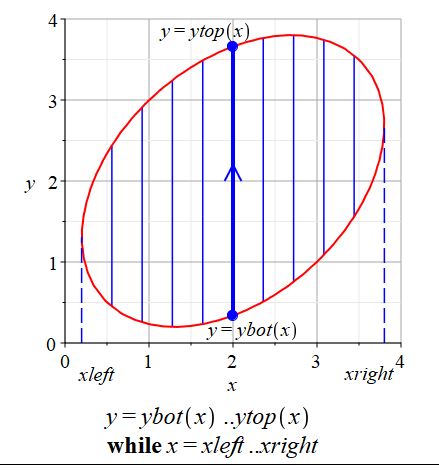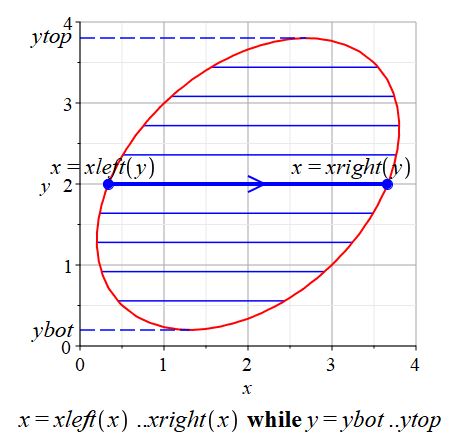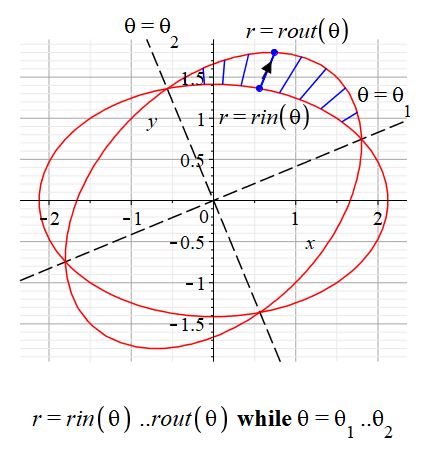double integrals

 |

 |
dr bob Supporting Diagrams
When converting information about bounding
curves to limits of integration in an iteration of
a double integral, it is important to document
the process of analyzing the information with
annotated diagrams. "Shade the region of
integration with equally spaced linear cross
sections along the direction of the variable
of integration, and label bullet point endpoints
of a "typical" such linear cross section roughly
in the middle with the starting and stopping
equations of the variable of integration, with
an arrow head midway along that cross
section indicating the increasing direction of
the corresponding integration variable." |


|
This sets up a parameterization of all the points in the region of
integration which directly translates into the limits of integration.
Notes
Maple worksheets
- parametrizing the points in a region using Cartesian coordinates
justifying the iteration of a double integral:
intcoorditeration.mw (Explore slider)
- double integral iteration schemes:
supporting diagrams (Cartesian and polar):
ellipsedoubleint.mw
Applications
Calculations involving continuous distributions of stuff (center of mass,
centroid, probability) are all examples of the same mathematics: averaging a
quantity (the stuff) over a 1, 2 or 3 dimensional region by integrating it
against a weighting function which divides up the total using a weighting
density function whose total integral is 1 (for all the stuff). The position
vector in each case is averaged in this way to produce the desired measure of
the stuff. Integrating with respect to the geometric measure (length, area,
volume) of the region where the points are distributed in some subset of the
whole space produces the geometric center called the centroid. For a
distribution of mass or charge described by a continous density function, this
produces the center of mass or charge. For a probability distribution this
produces the expected value.
While centroids/centers of mass are not terribly interesting in themselves,
they provide toy examples where students have some intuition of where the
"center" roughly lies, and so can judge whether their computed value of the
centroid makes
sense, and then with a unequal weighting from an inhomogeneous distribution of
mass, can have a sense of in which direction that distribution of mass will move
the centroid. Thus they are good "toy" problems to learn how integration is used
in applications.
dr bob website





